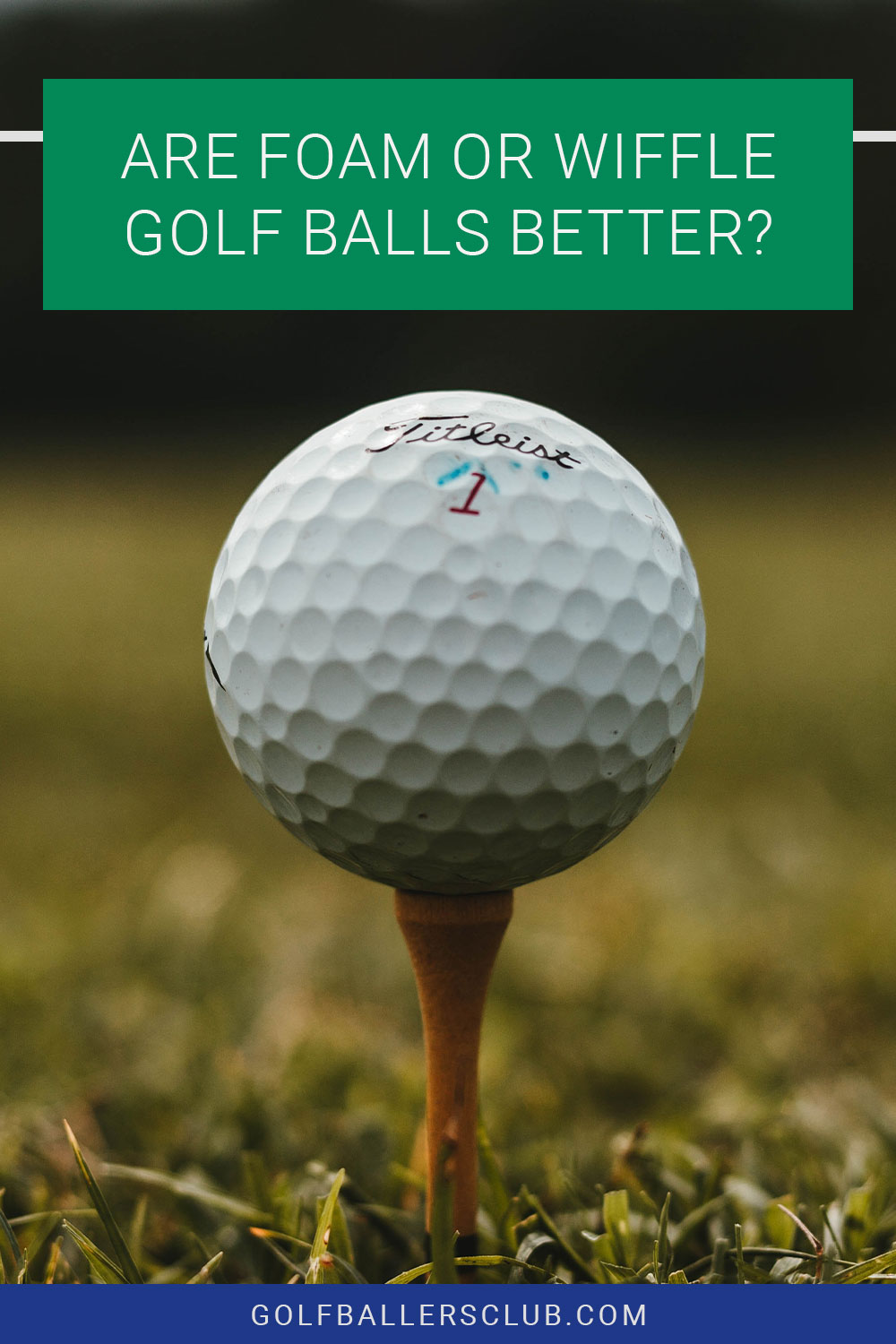Are Foam or Wiffle Golf Balls Better?
Last Updated on June 14th, 2023
We may earn commissions for purchases made through links on our site. Learn more on our about us page.
Practicing your golf swing can be expensive compared to the cheaper alternatives such as driving ranges, the local golf course, or even just purchasing a bucket of balls to hit over a cliff.
Driving ranges are an excellent place to start but can sometimes stress the budget regarding the cumulative costs; similarly, golf course fees can add up.
Sometimes a golfer wants to practice or tweak something before a round of 18 with colleagues.
With that context, we are brought to practice golf balls that are usable anywhere, which is better between foam balls and wiffle balls, depending on the player’s preference.

What is the Difference?
The main difference is the material composition, flight patterns, and distance the balls fly in the air. The balls fly according to what they are made of for each foam and wiffle ball variety.
According to specific sources, foam balls are better used for full-powered drives and working on swinging through the ball. Plus, they are fantastic for kids learning to play.
Wiffle balls are better served as short-game practice balls. Sure, balls are designed to fly straight or adjust to spin from the club; others are designed to simulate the dimples of standard golf balls when struck by practicing golfers.
How to Know Which One is Better for you?
Scientific processes or trial and error are two good places to start. Try both out, and see which type of practice balls help improve your game.
A wiffle ball or foam ball will respond differently depending on the brands, which continually change. Thus, it boils down to the combination of the player’s swing, club design, and how the ball responds to being struck.
After taking a bunch of swings with the different brands of practice balls, you will find that a specific type jives with your natural swing. That brand, foam or wiffle ball, is your better choice.
Do Practice Balls Work at All?
There is no replacement for an absolute golf ball, but various complementary accessories exist. For example, foam and wiffle practice balls will react and fly differently than a standard range or competition-grade golf ball.
The purpose of the practice balls is to help those with limited financial means and space practice their swing. In addition, parents will have a low-impact alternative to dangerous golf balls when practicing with or around the kids.
The practice balls work to a degree. It would be best if you got out to at least a driving range every so often to strike a standard ball.
Which one Lasts Longer?
The durability of the foam and wiffle balls variety of practice balls is limited. Estimates put the integrity of both ball varieties as no more than two dozen full-strength swings.
The product is not designed for long-term usage but provides a short-term solution. Iron and chipping practice equates directly to longer life expectancy for both practice golf ball varieties.
It is said that a foam ball can only withstand, on average, between a half dozen and a dozen full swings. Yet, at the same time, the wiffle ball has been given an average of a dozen to two dozen swings before the structure begins to warp and crack.
Which one has Proven to be more Efficient?
The definition of efficient is, according to Merriam-Webster:
1: productive of desired effects
Especially: capable of producing results with little or no waste (as of time or materials).
/// an efficient worker
/// efficient machinery
2: being or involving the immediate agent in producing an effect.
/ the efficient action of heating in changing water to steam
That being said, both have qualities that can help a golfer improve their game. For example, the foam has been known to help with driver practice, while the wiffle counterpart is effective in helping one practice their short game.
Final thoughts on Foam vs Wiffle Balls
A person can use a wide variety of practice balls to get that swing practice in. However, a person should take the time to try each product with the right feel.
Improvement comes to patience; patience is enough to get the tools needed but also allows for the experience to be acquired, which takes time. So give yourself that time, work through the kinks, and practice, practice, practice.
Lastly, remember there is no straightforward replacement for playing with the real thing. So take time to get out to the range every so often to see where your progression and growth has reached.



Leave a Reply